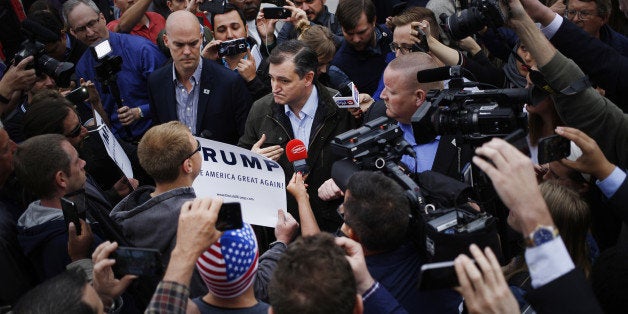
Every composer since Richard Wagner--and every conductor--knows one thing about silence: it is the most powerful and dangerous tool in live performance. Sometimes it's just a little bit of air between notes, called a luftpause. Sometimes it's even bigger: the "General Pause" (indicated in a score by an empty bar with a G.P. on it). The longest silence of all is indicated by a symbol that looks like a happy face--:)--turned 90 degrees counterclockwise, so the two dots are on the bottom. This is known as a corona, or, incorrectly, a fermata. It is a stop of any length--and that length is determined by the conductor. And when that sign hovers over a bar of silence, it is up to the maestro to determine how far to stretch nothingness-- maintaining the music's tension but without losing control of the public's attention.
Composers do this because silence is the demarcation of sound. Once there is a general silence in a piece of music, all that was heard before it is coalesced in the auditor's mind. It also indicates that something (who knows what?) is about to happen. People occasionally refer to it as a pregnant pause. Orators and politicians are both composer and performer, so their use of silence is more improvisatory and therefore subject to unfortunate consequences.
When Richard Wagner wrote the opening bars of his opera Tristan und Isolde, he indicated that the tempo should be "slow and yearning,"-- langsam und schmachtend. This is already extraordinary. Even though Wagner wrote very long operas, he hated slow tempos and rarely wrote the word "slow" in his music. That Tristan should begin this way makes it unusual. The audience hears a melody of only seven notes, the second of which is five slow beats long. Its length is only understood when the third note sounds.
And when this mysterious figure concludes in a harmonic haze--one that makes its key and its function totally ambiguous--it is followed by silence--and not just a little silence. The silence lasts seven beats. This silence is like a black hole for the audience, and when the next phrase begins, then and only then, does the audience have a sense of the immense size of the temporal universe that is Tristan.
Like so much that Wagner achieved, the influence of this bold opening gesture affected just about everyone who composed after him. Debussy repeats the idea in his Prelude to the'Afternoon of a Faun,' when, after its famous flute solo and the response of the orchestra, there is a total of six "very moderate" beats of nothing. The brain and the ear, which are searching for more information, open up to perceive what is next.
Silence brings an audience together, and sometimes does it shockingly so.
Stravinsky ended Part One of his Rite of Spring--which is as loud as anything in unamplified music--with an abrupt stop. At its premiere performances in 1913, the last note was synchronized with a freeze from all the dancers, hands in the air and in a tight circle. Lights out. Curtain. After a few moments, conductor Pierre Monteux began the orchestral introduction to Part Two. However, when The Rite is performed as a concert piece, there is no way to prepare the audience for the sudden silence. It is like running wildly and suddenly falling (in slow motion) off a cliff.
Leonard Bernstein once laughed when he told me of a "ladies matinee" with the New York Philharmonic, during which two members of the audience we having a heated conversation while he and the orchestra were performing Stravinsky's savage masterpiece. Just as they came to the unexpected silence, Bernstein heard one woman say in a loud voice, "Well, I always use Crisco!"
Senator Cruz learned a thing or two about silence yesterday in Marion, Indiana. He likes to speak as many preachers speak, with long pauses that are meant to capture the importance of what he is about to say -- except that the Donald Trump supporter he was confronting used Cruz's silences to dismantle his rhetorical bravado. Senator Cruz, who had been an astoundingly patient man as he was being heckled, tried to have a conversation. When he said, "Sir, America is a better country," and then took a General Pause for emphasis, his nemesis filled in the blank with, "Without you." Once again (into the breach!) the senator tried to control the performance with, "Thank you for those kind sentiments. Let me point out, I have treated you respectfully the entire time. A question that everyone here should ask ..." (and again, he tried for the Wagnerian pause). Instead of setting up something profound about exactly what we should be asking, the same man saw an opportunity, and with masterful timing, supplied the question: "Are you Canadian?" The effect was apparently lethal to the senator's presidential aspirations.
We conductors rarely get heckled. We start Verdi's overture to La Forza del Destino -- with its powerful blasts of three E-naturals, calling us all to attention, and (as Verdi asks) follow it with a silence of indeterminate length. This forces the audience to settle in and pay attention. A terrifying thought occurred to me watching Senator Cruz yesterday. What if someone in an opera house shouted, "Oh, get on with it." during that first long pause? A second blast of three E-naturals follows, and again, during this second silence we might hear, "Toscanini did it better!"
Senator Cruz, it was frightening for a conductor to see what happened in your misjudged pregnant pauses. What works from the pulpit and the orchestra pit does not always work on the stump. That's when silence, which is said to be golden, turns to lead. Alchemy should work the other way around. Timing, as they say, is everything. That goes for conductors as well as politicians.
The rest , if used incorrectly, is indeed silence.
